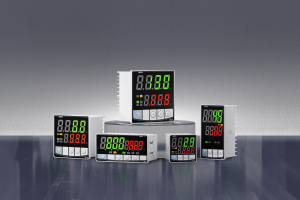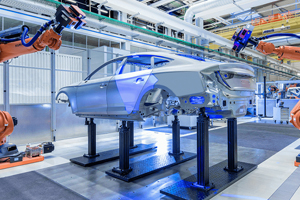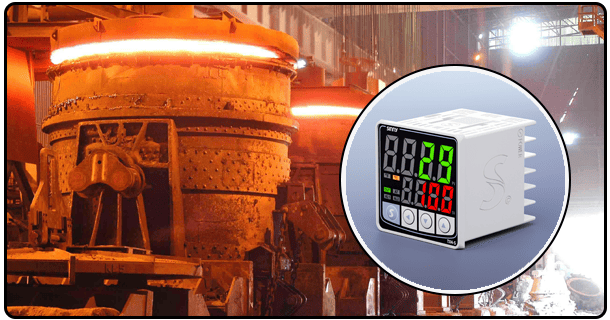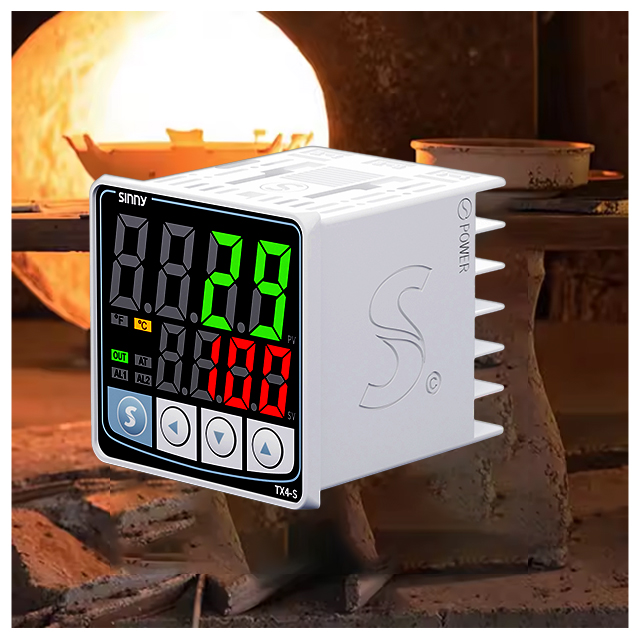Introduction: Precision Control and the Imperative of It
The article explores the complex world of Dual Digital Display PID temperature controller, focusing specifically on the manual aspects. This article will explain what the controllers do, how they work, key benefits and features, manual mode's importance, common applications and practical considerations when selecting and using them. Anyone involved in industrial manufacturing, process control or laboratory automation will need to understand this technology.
II. The Core Components of the Dual Display PID controller
Digital PID Controller: Intelligent Engine At its core is a microprocessor (MCU). The digital brain performs essential functions.
Conversion from Analog to Digital (A/D). Converts temperature sensor signals into digital values.
Execution of the PID algorithm: The core logic for control.
User interface management: This manages parameters, configurations, and stored inputs. It displays the information displayed on screens and interprets button or keypad inputs.
Module Output: The module outputs the control signals calculated into physical actions. Output modules include Solid State Relays for powering heating elements. Bipolar Transistor Outputs are used for analog control signals, such as 0-10V and 4-20mA.
Dual Display: A Clear Communication
It is the key difference. The controller has two digital displays instead of one. The dual-screen design offers several benefits:
Simultaneous Display of Information: The first display may show the actual process temperature while the second displays the setting and/or detailed parameters. (Like P, I or D values). The operator can monitor system performance without having to constantly switch views.
Information specific to each mode: Each display may show data relevant for the particular task, depending on the model of the controller and the operating mode selected (Auto or manual).
The Foundation of Control
Sensors are used to provide accurate temperature information. Sensors are available in a variety of types.
Thermocouples: Robust, inexpensive, and suitable for wide temperatures ranges. Cold junction compensation must be performed by the controller.
Resistant Temperature Detectors, like PT100/PT1000. Known to be more accurate and stable than thermocouples. Often used in laboratories and applications requiring high precision. Signal conditioning is required (e.g. using an integrated circuit or Pt100 input modules).
III. This is the Control Process.
It is the control algorithm that gives a PID controller its true power. The controller continuously measures the temperature of the process, compares that to the setpoint and then adjusts its output in order to reduce the error. The process happens automatically and many times per minute.
Cycle of Measurement: Using its input circuit, the controller receives the signal sent by the sensor. The circuit is responsible for signal conditioning, amplification and filtering (such as cold junction compensation in thermocouples, or linearization of RTDs).
Calculation of Temperature: A digital processor transforms conditioned signals into temperature values.
Calculation of Error: A temperature calculation is made and compared with the setpoint defined by the user. This difference is called the "error signal".
PID Algorithm: The controller uses the error signal to calculate three components.
Action (P) Proportional: The component responds to the current Error. Output_P is proportional with the magnitude of error. The higher the proportional gain, (Kp), the stronger is the corrective action. However, if it's too high, this can cause instability.
Integral Action (I): The component responds to the error accumulated over time. The goal is to remove the steady-state residual error, which can often be found with just P-action. Output_I is equal to the sum of past errors, multiplied with a certain factor. (Output_I is Ki * Errordt where Ki is integral gain. The integral action is critical for accuracy over the long term, but can lead to an excessive amount of error if it's not tuned properly.
Action Derivative D: The component forecasts the future error using the change rate for the current error. The brake is applied to reduce overshoot and improve stability when temperature changes suddenly. The output depends on the change in error rate (Output_D=Kd*de/dt where Kd represents the derivative gain). The derivative action is sensitive to noise.
This process is called PID tuning.
IV. V. Manual mode: Override the direct control
The manual mode, which is often present in advanced controllers such as dual-display type PID controllers, is an important feature. This mode allows for direct control of the output by the user, without the need to use the PID calculations based on process temperature differences.
What is manual mode?
Manual mode is when the user enters directly into the controller a value that they specify (often referred to as a 'Bias,' a 'Manual Setpoint,' or an 'Override.'). The value determines the output level, regardless of actual temperature. It still displays the actual temperature, but does not calculate output based on it.
Manual mode: Why use it?
Manual mode is essential in several scenarios:
Calibrating: Adjusting the output signal directly during sensor calibration and system characterisation.
Start-up fine-tuning: Make precise adjustments before switching on automatic control.
Troubleshooting isolating problems by controlling output directly and watching the response of the process.
Stability Override: Temporarily override automatic oscillations and unstable behavior.
Control of the ramp: Very slow and controlled adjustments during start-up or shutdown phases, where a proportional response might not be desirable.
Manual mode:
It is possible to display the process temperature (generally on a single screen) while it continues to be measured.
The controller keypad is used to change the value of 'Bias or Manual Setpoint.' (often via function keys, menu navigation or specific functions).
When the controller receives a temperature error, it sends a signal only corresponding to the Bias value entered manually.
It is important to understand the Bias in the context of output ranges (e.g. 0-100% on a relay, or 0-10V on a power supply).
V. The Benefits and Features of Dual Display PID Controls
Dual-display digital PID controllers offer many advantages over simple control systems. They are designed for applications that require more complex features.
User-Friendly Interface: Two separate displays provide clearer information presentation, reducing operator confusion. The keypad allows for easy parameter adjustments and modifications.
Advanced Control Capabilities These controllers are often more than just basic thermostats.
Autotuning Many models have built-in algorithms which automatically calculate optimal PID (Kp Ti Td) parameters by analysing the response of the process. It reduces manual tuning skills to a minimum.
Programming and Multiple Setpoints: The ability to program temperature profiles, such as ramps, hold, or plateaus. This is essential when dealing with complex processes, like thermal cycling, baking schedules, etc.
Robust alarms: Multiple types of alarm (Lower Limits, Upper Limits, Deviations) and configurable actions to warn operators about potential or actual process deviations (e.g. light indicator, relay output, audio alarm).
Protocols of Communication: Certain models have communication interfaces such as Modbus RTU/TCP or RS-485.
Digital PID controllers featuring dual displays are indispensable for many applications due to their high precision, stability and advanced features.
Laboratory research: The PCR machine requires precise thermal cycling. Incubators need to be stable for cell cultures. NMR spectrometers require controlled environments. Calorimeters accurately measure temperature changes.
Manufacturing Industry: The chemical reactors require precise temperature profiles. Autoclaves depend on steam sterilization. CIP/SIP Systems need to be cleaned and filled at controlled temperatures. Food, Beverage and Alcohol: Pasteurization needs to be done at a specific temperature for food safety. Fermentation processes require temperature-controlled fermentation for consistency in flavour and yield. Sterilizers need reliable temperature monitoring. Canning lines demand precise temperature measurement for sealing integrity.
VII. How to choose the right Dual Display PID controller
Features of Manual Control: Check for clear indicators that indicate manual/auto modes, adjustable bias range and possibly independent manual control channels.
VIII. Installation, configuration, and tuning
Planning and implementation are essential for a successful project.
Hardware Install: Secure and correct mounting of controllers and sensors. Follow wiring diagrams meticulously. Consider factors such as cable gauge, shielding and noise in noisy environments when choosing components.
PID tuning: This step is usually the most important. Autotuning can make this easier, but it is still important to understand the fundamentals. Begin with a low-proportional gain and add integral actions until you minimize the offset. Then add derivatives to dampen oscillations. Manual tuning involves techniques like Ziegler Nichols' frequency response or the reaction curve method. These methods require the introduction of a change in step and the analysis of the response. It is important to strike a balance between stability and responsiveness.
IX. Troubleshooting common issues
Oscillation or Slow Response: Verify the control elements are working correctly, and can respond quickly.
Manual mode issues: Check the Bias range limit, verify the position of the Mode switch, and ensure that the output circuit is working correctly (SSR or transistor). Refer to the dual-digital display pid controller manual to get specific instructions for entering and adjusting Bias values.
Communication or Display Failures: Verify the wiring connection, check the baud rate and protocol settings and make sure the device connected (e.g. PC, PLC), is working correctly.
X. Conclusion: Precision and control are important.
Dual Digital Display PID Temperature Controller is a major advancement in the technology of temperature control. These systems combine the accuracy of digital PID algorithm with the clarity and flexibility of two different displays, delivering stability and user friendliness that are unattainable by simpler alternatives. They are used in many laboratories, research centers, manufacturing facilities, and other places because of their advanced features and ability to override the control action. The benefits of selecting and tuning PID controllers are substantial. They can improve the quality and consistency of products, as well as operational efficiency. This article provides an excellent foundation to leverage this powerful technology.
- PID Digital Temperature Control with PT100 Input for Modern Applications
- Outline: Digital PID Temperature Controller PT100























